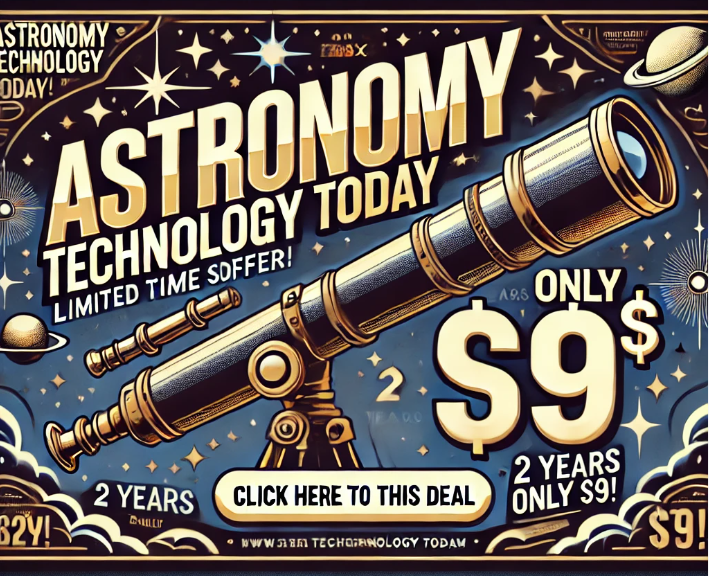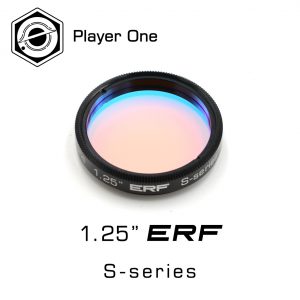Explore Scientific ES 80 ED Triplet APO Review
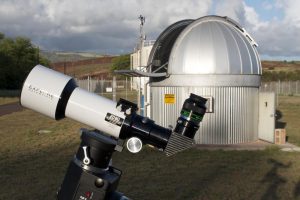
Explore Scientific is known for refracting telescopes, quality eyepieces, the David H. Levy Comet Hunter , a Maksutov-Newtonian telescope and Twilight I and II alt-azimuth mounts. I own a Twilight II mount and enjoy using it with various small refractors and my 6-inch f/4 Newtonian reflector. However, prior to beginning this project, I had never used an Explore Scientific telescope.
Explore Scientific carries three series of refracting telescopes: the AR Doublet Series (102-mm, 127-mm and 152-mm doublets), the ED Triplet Carbon Fiber Series (80-mm, 102-mm, 127-mm and 152-mm Apos) and the ED Triplet Essential Series (80-mm, 102-mm and 12-7mm Apos). In this article, I am focusing (pardon the pun) on Explore Scientific ES 80 ED (mentioned as ES80 here), the smallest telescope in the ED Triplet Essential Series (see Image 1).
The telescope arrived packed in a double cardboard box . Impressively, the optical tube assembly (OTA) was housed in a third rugged cardboard box with Styrofoam padding. The diagonal was contained in another padded box with cool star charts on the outside and inside, also packed in Styrofoam.
The telescope comes with a quality 2-inch carbon-fiber diagonal, a 2-inch-to-1.25-inch adapter, a Vixen-style dovetail plate (see Image 1), two focus extension tubes required for straight through photography, a two-speed focuser with locking nut, and a finder scope mounting bracket. Fortunately, I have a 9×50 right-angle erect-image finder with a mounting rings that fit the bracket perfectly.
If you look at this model on the Explore Scientific website, you notice slight differences in the Explore Scientific ES 80 ED model shipped to me compared to the version pictured there. Mine came with a larger diameter dew shield with the logo on the dew shield. The version pictured on the website has a smaller diameter dew shield with the logo on the tube. The dew shield slides in and out making the telescope more compact for transport. The OTA cap fits over the objective lens inside of the dew shield and not on the dew shield itself, like other-make refractors. So, taking off or replacing the cover requires reaching inside the dew shield or sliding the dew shield all the way back.
The Explore Scientific ES 80 ED contains an air-spaced triplet combining genuine HOYA extra-low-dispersion (ED) glass and proprietary EMD enhanced multi-layer coatings on all optical surfaces. This apochromatic lens virtually eliminates all chromatic aberration. The f/6 focal ratio yields a 480-mm focal length.
The views through this telescope were quite nice. My 22-mm Tele Vue Nagler eyepiece yielded 21x. I scanned the summer Milky Way from Scorpius to Aquila, stopping at numerous star clusters, bright nebulae and dark nebulae. The color and contrast were great, and visually, the stars looked sharp throughout the field of view. My 5-mm Nagler gave 96x, sufficient to view Saturn and its splendid rings. Titan and two minor Saturnian moons were clearly visible. During moments of exceptional seeing, the Cassini gap in Saturn’s rings was visible.
I always like to test the imaging capabilities of any telescope I review. Therefore, I mounted the telescope piggyback to the main scope in my observatory. Note in the image I attached a 9×50 finder scope, the two focuser extension tubes and an SBIG ST-8300C CCD camera. In this configuration, the ES80 could serve as a guide scope for imaging with the main telescope. But for the purposes of testing, I guided with a 10-inch Newtonian astrograph, and imaged with the ES80.
Image 2 displays a 30-minute exposure taken of the Dumbbell Nebula (M27). The stars and the nebula show good color and are sharp through the center portion of the image. Unfortunately, all triplet Apos suffer from field curvature, the effect being greater with smaller focal ratios. Fortunately, I happen to have a third party field flattener made for CCD imaging similar to the one sold by Explore Scientific.
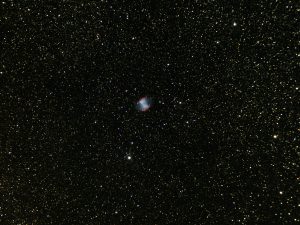
Overall the Explore Scientific ES 80 ED Triplet refractor is a great grab-and-go telescope that will provide sharp, color-corrected views of celestial objects. The telescope can also double as a guide scope piggybacked on larger refractors or reflectors. With a field flattener, the telescope has excellent potential for wide field-of-view CCD or DSLR imaging.
 By Dr. James Dire:Dr. Dire has an M.S. degree in physics from the University of Central Florida and M.A. and Ph.D. degrees from The Johns Hopkins University, both in planetary science. He has been a professor of physics astronomy at several colleges and universities. He is the president of Methodist College in Peoria, Illinois. He has played a key role in several observatory projects including the Powell Observatory in Louisburg, KS, which houses a 30-inch (0.75-m) Newtonian; the Naval Academy observatory with an 8-inch (0.20-m) Alvin Clark refractor; and he built the Coast Guard Academy Astronomical Observatory in Stonington, CT, which houses a 20-inch (0.51-m) Ritchey Chrétien Cassegrain.
By Dr. James Dire:Dr. Dire has an M.S. degree in physics from the University of Central Florida and M.A. and Ph.D. degrees from The Johns Hopkins University, both in planetary science. He has been a professor of physics astronomy at several colleges and universities. He is the president of Methodist College in Peoria, Illinois. He has played a key role in several observatory projects including the Powell Observatory in Louisburg, KS, which houses a 30-inch (0.75-m) Newtonian; the Naval Academy observatory with an 8-inch (0.20-m) Alvin Clark refractor; and he built the Coast Guard Academy Astronomical Observatory in Stonington, CT, which houses a 20-inch (0.51-m) Ritchey Chrétien Cassegrain.
###
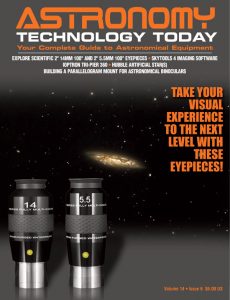 And to make it easier for you to get the most extensive telescope and amateur astronomy related news, articles and reviews that are only available in the magazine pages of Astronomy Technology Today, we are offering a 1 year subscription for only $6! Or, for an even better deal, we are offering 2 years for only $9. Click here to get these deals which only will be available for a very limited time. You can also check out a free sample issue here
And to make it easier for you to get the most extensive telescope and amateur astronomy related news, articles and reviews that are only available in the magazine pages of Astronomy Technology Today, we are offering a 1 year subscription for only $6! Or, for an even better deal, we are offering 2 years for only $9. Click here to get these deals which only will be available for a very limited time. You can also check out a free sample issue here


